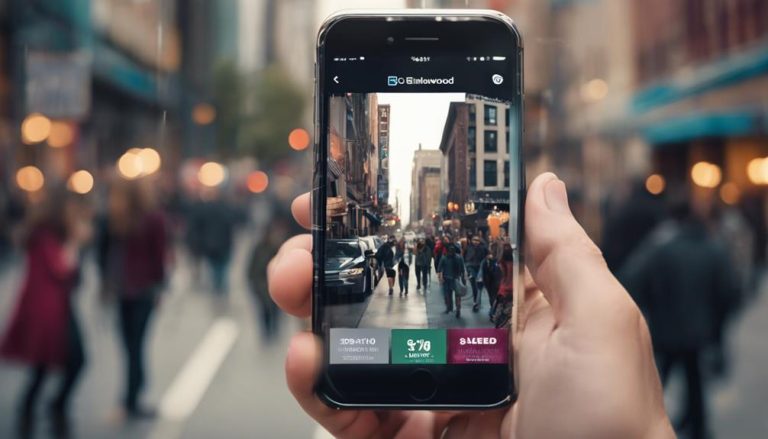SEO for Conversion Rate Optimization
As you endeavor to boost your website's conversion rates, you're likely aware that search engine optimization (SEO) plays a vital role. But did you know that optimizing for conversions requires a nuanced approach that goes beyond just ranking higher? By understanding what drives your users' behavior and tailoring your content to meet their needs, you can substantially increase the likelihood of driving conversions. But that's just the starting point – there are several other pivotal elements to ponder. What are the technical SEO improvements that can make or break your conversion strategy, and how can you measure success to maximize your return on investment?
Key Takeaways
- Analyzing search queries and user intent helps create targeted content that addresses pain points, increasing conversion likelihood.
- Optimizing site speed, as a 1-second delay can result in a 7% reduction in conversions, is crucial for technical SEO.
- Clear navigation paths, streamlined user interface, and minimal clutter guide users seamlessly through the site, increasing conversion chances.
- Crafting a clear value proposition that communicates unique benefits and solves problems focuses on tangible benefits, driving conversions.
Understanding User Intent
When you optimize your website for search engines, understanding user intent is crucial because it allows you to tailor your content to meet the specific needs of your target audience, increasing the likelihood of driving conversions.
By analyzing search queries, you can decipher what motivates users to search for specific keywords and phrases. This insight into user psychology enables you to create content that resonates with your audience, addressing their pain points and concerns.
For instance, if you're an e-commerce site selling fitness gear, understanding that users searching for 'best running shoes for heavy runners' are likely looking for durability and support can inform your product descriptions and recommendations.
By aligning your content with user intent, you can increase engagement, reduce bounce rates, and ultimately drive more conversions. It's imperative to stay up-to-date with search query trends and adjust your content strategy accordingly.
Optimizing Website Experience
As you focus on optimizing your website experience, you'll want to create clear navigation paths that guide users seamlessly through your site, increasing the chances of conversion.
A streamlined user interface is also vital, as it reduces friction and enables visitors to find what they're looking for quickly.
Clear Navigation Paths
By streamlining your website's navigation paths, you can substantially reduce bounce rates and increase conversions by making it easy for visitors to find what they're looking for. A well-structured site hierarchy and information architecture are vital for creating clear navigation paths. This involves organizing your content into logical categories and subcategories, making it easy for users to find related information.
| Navigation Element | Description | Best Practices |
|---|---|---|
| Primary Navigation | Main menu items | Limit to 5-7 items, use clear and concise labels |
| Secondary Navigation | Submenu items | Use dropdowns or mega menus to reduce clutter |
| Breadcrumb Navigation | Showing current location | Use clear and descriptive labels, update dynamically |
| Internal Linking | Linking to related content | Use descriptive anchor text, limit to 2-3 links per page |
Streamlined User Interface
You can further boost conversions by streamlining your website's user interface, which plays a vital role in shaping the user experience and influencing buying decisions.
A well-designed UI can increase conversions by up to 200% (Source: Adobe).
To achieve this, focus on simplicity, clarity, and consistency in your design elements. Confirm that your website's layout is intuitive, with clear calls-to-action and minimal clutter.
Additionally, prioritize accessibility standards, such as the Web Content Accessibility Guidelines (WCAG 2.1), to cater to a broader audience.
By doing so, you can improve engagement, reduce bounce rates, and increase the chances of visitors completing their desired actions.
For instance, using high-contrast colors and clear typography can improve readability, while responsive design guarantees a seamless experience across devices.
Content That Converts
When you optimize your content for conversions, you're not just writing for the sake of writing – you're crafting a strategic message that resonates with your audience.
To get started, you need to clearly communicate your unique value proposition, so visitors instantly understand what sets you apart from the competition.
Clear Value Proposition
Crafting a clear value proposition is crucial to driving conversions, as it immediately communicates the unique benefits that set your product or service apart from the competition.
When you clearly define your brand messaging, you're able to differentiate yourself from the competition and resonate with your target audience.
This, in turn, increases the likelihood of conversion.
To craft a compelling value proposition, you need to identify your unique selling points.
What sets your product or service apart?
What problems do you solve for your customers?
What benefits do you offer that others don't?
By answering these questions, you'll be able to develop a clear and concise value proposition that speaks directly to your target audience.
Remember, your value proposition should be data-driven, focusing on the tangible benefits that your customers will experience.
By doing so, you'll be able to create a sense of urgency and drive conversions.
Compelling Call to Action
Optimize your conversion rates by designing a compelling call to action that effectively communicates the next step, creating a seamless user experience that drives sales and revenue.
You want your CTAs to be attention-grabbing, clear, and actionable, encouraging users to take the desired action. Use action phrases like 'Get Started Today' or 'Sign Up Now' to create a sense of urgency and prompt users to act.
Incorporate urgency messaging to create a limited-time offer or scarcity, which can increase conversion rates by up to 27%. For example, 'Limited spots available – Register now!' or 'Offer ends soon – Don't miss out!'
Use contrasting colors and fonts to make your CTAs stand out, and guarantee they're mobile-friendly and easily clickable. Make sure your CTAs are above the fold, so they're the first thing users see when landing on your page.
Technical SEO Essentials
About 60% of search engine optimization (SEO) issues stem from technical problems, which is why fixing these underlying flaws is crucial to improving your website's conversion rates.
You can't ignore the technical aspects of SEO, as they lay the foundation for a solid online presence.
Start by optimizing your site speed, as a 1-second delay can result in a 7% reduction in conversions. Certify your website loads quickly by compressing images, leveraging browser caching, and enabling keep-alive headers.
Next, create and submit XML sitemaps to help search engines understand your website's structure and content. This will improve your website's crawlability and indexing, ultimately driving more traffic to your site.
Mobile-First Conversion Strategies
With your technical SEO foundation in place, you're now poised to capitalize on the growing mobile traffic, where 70% of users claim that a mobile-friendly website is essential to their purchasing decision.
As you optimize for conversions, it's pivotal to prioritize mobile-first strategies. You see, mobile users are more likely to abandon a website that's not optimized for their device, resulting in lost sales and revenue.
To combat this, you need a responsive design that adapts seamlessly to smaller screens. This guarantees a smooth user experience, regardless of device or screen size.
Furthermore, consider integrating a mobile wallet, like Apple Pay or Google Pay, to simplify checkout processes and reduce friction. By doing so, you can increase conversions by up to 10%.
Additionally, verify your website's loading speed is lightning-fast, as mobile users expect instant gratification. By implementing these mobile-first strategies, you'll be well on your way to maximizing conversions and driving revenue growth.
Measuring and Optimizing Results
By tracking key performance indicators (KPIs) like conversion rates, bounce rates, and average order value, you can pinpoint areas of your website that need improvement to maximize your return on investment (ROI). This data tracking is vital in identifying what's working and what's not, allowing you to make data-driven decisions to optimize your website for conversions.
To take it to the next level, set specific, measurable goals for your website. What do you want to achieve? Do you want to increase conversion rates by 20% or boost average order value by 15%? By setting clear goals, you'll be able to focus your efforts on what matters most and track your progress along the way.
Some benefits you can expect from measuring and optimizing your results:
- Increased conversions: By identifying and fixing conversion-killing elements on your website, you can drive more sales and revenue.
- Improved user experience: By optimizing your website for conversions, you'll also be improving the overall user experience, leading to happier customers and more repeat business.
Frequently Asked Questions
How Do I Balance SEO and User Experience Without Compromising Either?
"When designing for users, you balance UX and SEO by applying design principles like simplicity and clarity, while structuring your site's information architecture to prioritize intuitive navigation and accessibility, ensuring a seamless experience for both humans and search engines."
Can I Use Ai-Generated Content for Improving Conversion Rates?
You're considering AI-generated content to boost conversion rates, but be aware of AI limitations and prioritize content authenticity to build trust with your audience; authenticity trumps efficiency, as users can spot fake content from a mile away.
What Is the Ideal Keyword Density for Conversion-Focused Content?
You're optimizing content for conversions, so focus on content relevance and keyword clustering. Aim for a natural keyword density of 0.5-1.5% to avoid penalties and boost relevance, rather than stuffing keywords for search engines.
Do I Need to Have a Separate Website for Mobile Users?
You don't need a separate website for mobile users; instead, focus on mobile-first design and responsive layouts that adapt to various devices, ensuring a seamless user experience and increasing conversions.
How Do I Prioritize Conversion Rate Optimization for Multiple Personas?
You prioritize conversion rate optimization for multiple personas by creating detailed persona maps, profiling your users, and identifying their unique pain points, goals, and behaviors to tailor your optimization strategies accordingly.
Conclusion
By optimizing your website for conversions, you'll see a tangible impact on your bottom line.
By understanding user intent, crafting content that resonates, and fine-tuning technical SEO essentials, you'll drive more conversions and maximize ROI.
With a mobile-first approach and data-driven decisions, you'll be well on your way to a conversion-optimized website that delivers real results.
Now, it's time to put these strategies into action and watch your conversion rates soar!







